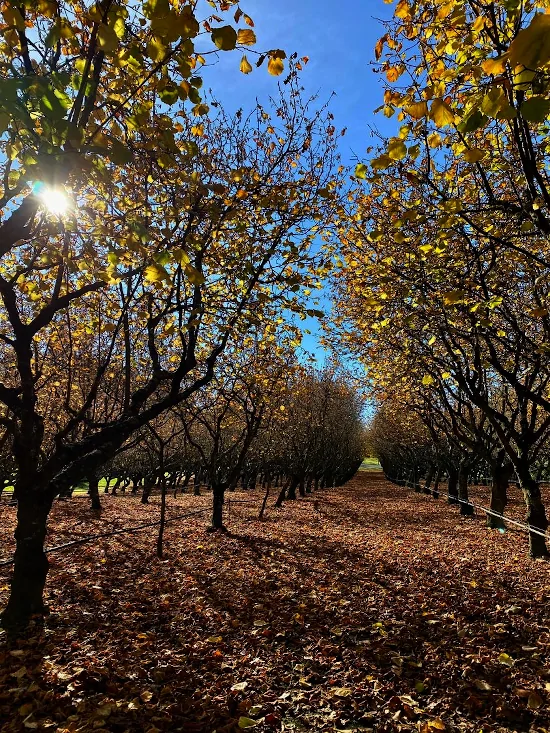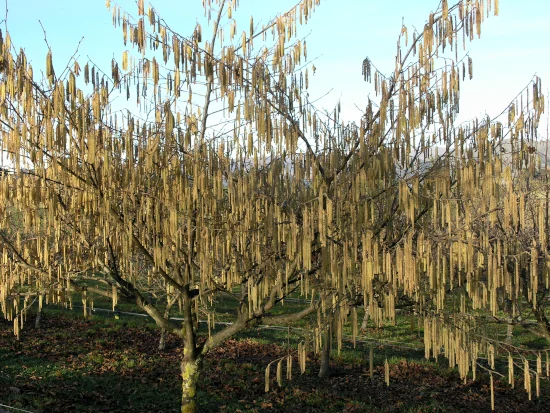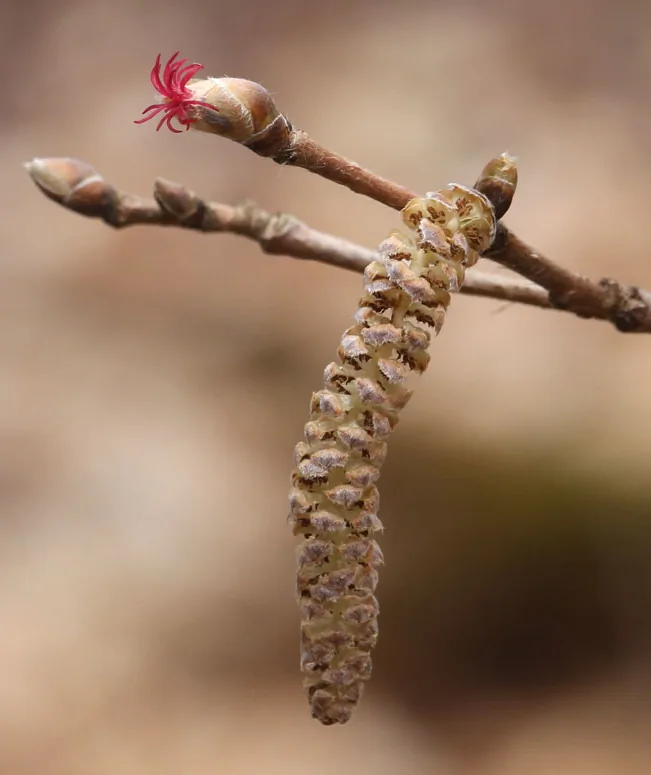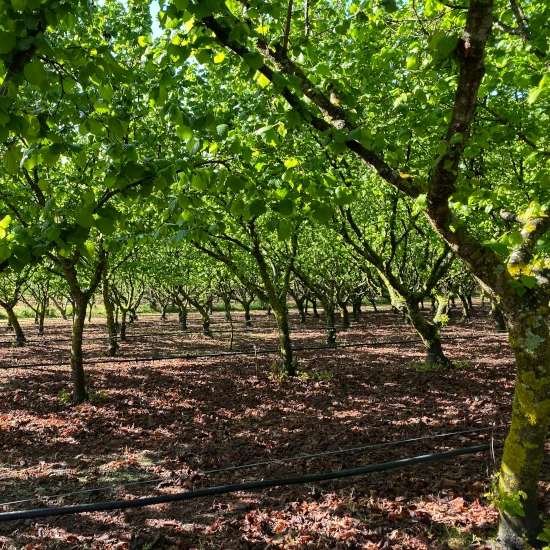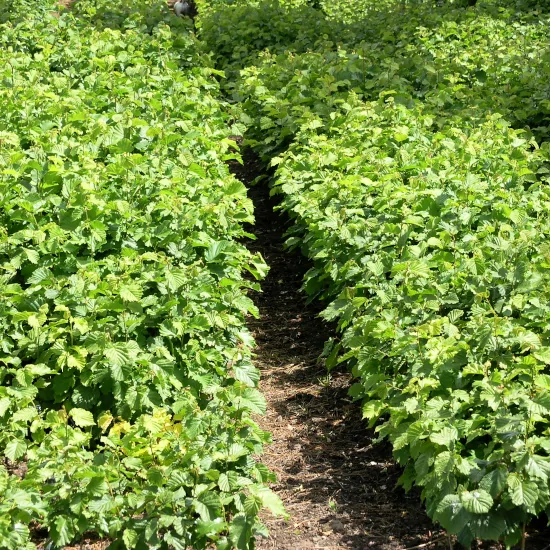Prior to Planting
Details
Hazelnuts are a relatively hardy tree and will withstand some degree of adversity and neglect, however, if you hope to get quality and quantity of nuts there are some important considerations to attend to in the planning and maintenance of your orchard, whether you are planting two or two thousand trees.
Site and Soil
Hazels prefer a reasonably fertile soil with good soil moisture but adequate drainage. They will tolerate frosts but established wind shelter is a must. Persistent harsh winds will slow the growth of your trees and hence also affect their productivity.
When planning orchard layout you will need to allow for root competition from shelter trees if a variety such as pines or poplars have been used. Side pruning will be required as part of your ongoing maintenance programme if you use these types of trees. We would recommend the use of a tap rooting tree such as Italian Alder as the preferred orchard shelter.
Site and Soil
Hazels prefer a reasonably fertile soil with good soil moisture but adequate drainage. They will tolerate frosts but established wind shelter is a must. Persistent harsh winds will slow the growth of your trees and hence also affect their productivity.
When planning orchard layout you will need to allow for root competition from shelter trees if a variety such as pines or poplars have been used. Side pruning will be required as part of your ongoing maintenance programme if you use these types of trees. We would recommend the use of a tap rooting tree such as Italian Alder as the preferred orchard shelter.
